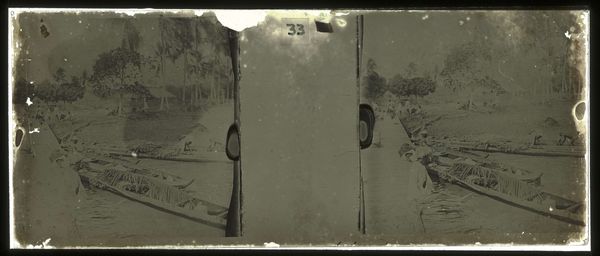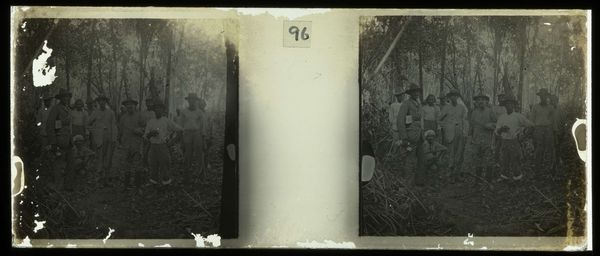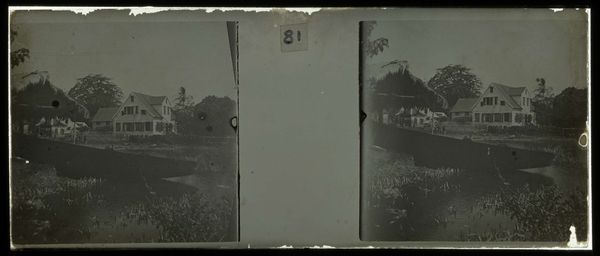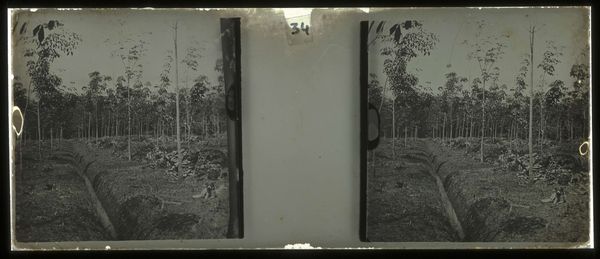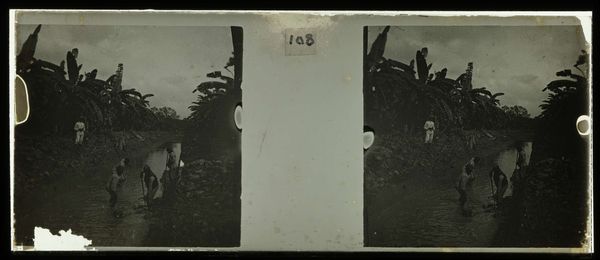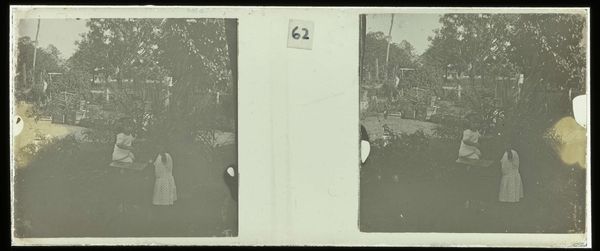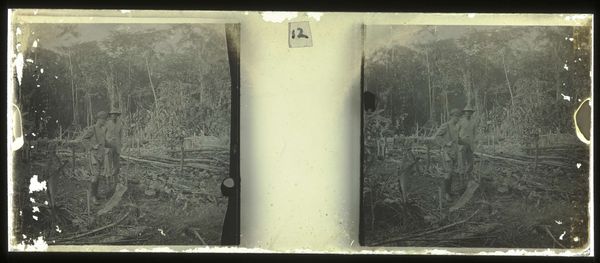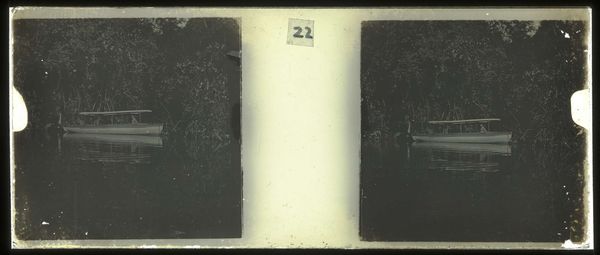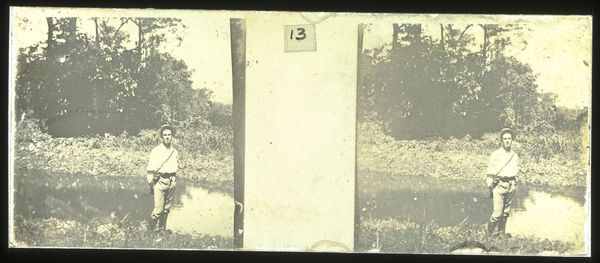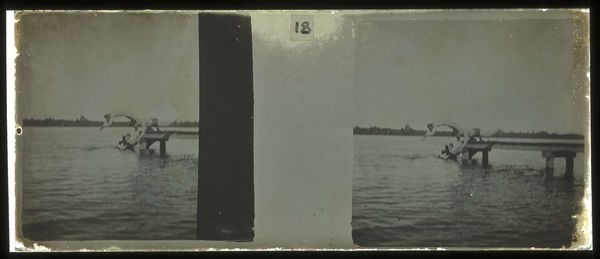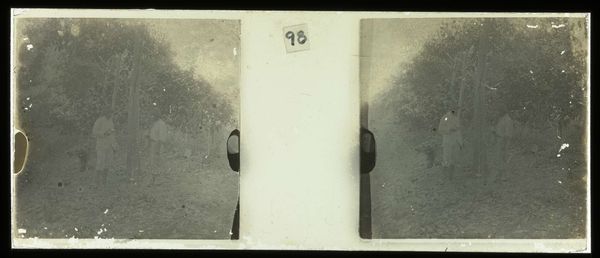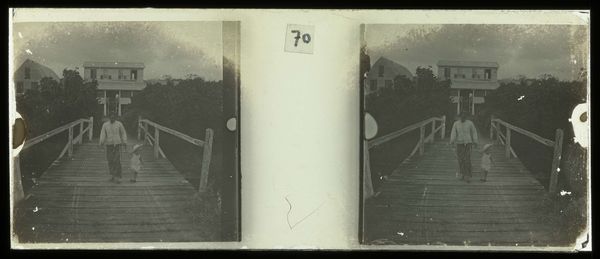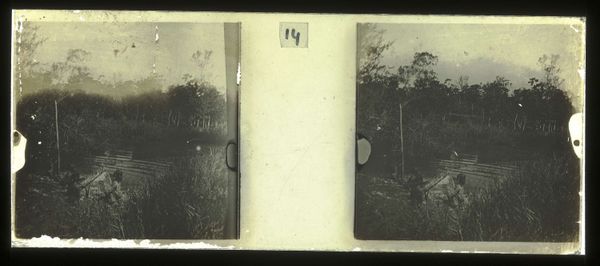
photography
#
landscape
#
photography
Dimensions: height 4.5 cm, width 10.5 cm
Copyright: Rijks Museum: Open Domain
Editor: This is Theodoor Brouwers' "Plantage Accaribo met woonhuis," a photograph taken sometime between 1913 and 1930. The dark tones and somewhat obscured details create a rather ominous feeling for me. How do you interpret this work? Curator: This photograph, seemingly a benign landscape, demands a deeper interrogation. The plantation, likely in Suriname, signifies a brutal history of colonialism and forced labor. The "woonhuis," or residence, embodies the power structure and economic exploitation inherent in the plantation system. It raises questions about the photographer's own positionality and the gaze through which this landscape is presented. Consider whose narrative is centered here, and whose is erased? Editor: So, the seemingly simple depiction of a landscape is actually a complex statement about power and inequality? Curator: Precisely. The beauty of the landscape can be a seductive veil obscuring the harsh realities of those who toiled on that land. Think about the composition—the imposing house set against the backdrop of what is implied to be a carefully cultivated plantation. This speaks volumes about the control exerted over both the land and its inhabitants. How might this image function within the context of early 20th-century colonial photography? Editor: It's unsettling to think how easily we can overlook the historical weight embedded in something that appears so...ordinary. It definitely shifts my perspective. Curator: It invites us to be critical viewers, always questioning the power dynamics at play in representation and to examine the long shadows of colonialism on present-day society. What did we learn, then, in reflecting on photography and injustice? Editor: That photographic landscapes are never neutral; they can reinforce or, hopefully, challenge oppressive histories.
Comments
No comments
Be the first to comment and join the conversation on the ultimate creative platform.
